-
 If You are Planning a Trip to Pondicherry in 2020, These are the Places to Visit for Foodies, Beach Bums and Shopaholics!
If You are Planning a Trip to Pondicherry in 2020, These are the Places to Visit for Foodies, Beach Bums and Shopaholics!
-
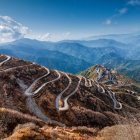 Take a Cool Break This Summer as BP-Guide Brings You the 10 Coolest and Most Mesmerizing Places to Visit in India in the Summers (2019)
Take a Cool Break This Summer as BP-Guide Brings You the 10 Coolest and Most Mesmerizing Places to Visit in India in the Summers (2019)
-
 10 Best Restaurants in Bandra: from Fine Dining to Hipster Cafes and Budget Eats, These are the Places You Absolutely Need to Eat At in 2019!
10 Best Restaurants in Bandra: from Fine Dining to Hipster Cafes and Budget Eats, These are the Places You Absolutely Need to Eat At in 2019!
Interesting Facts about Kathmandu
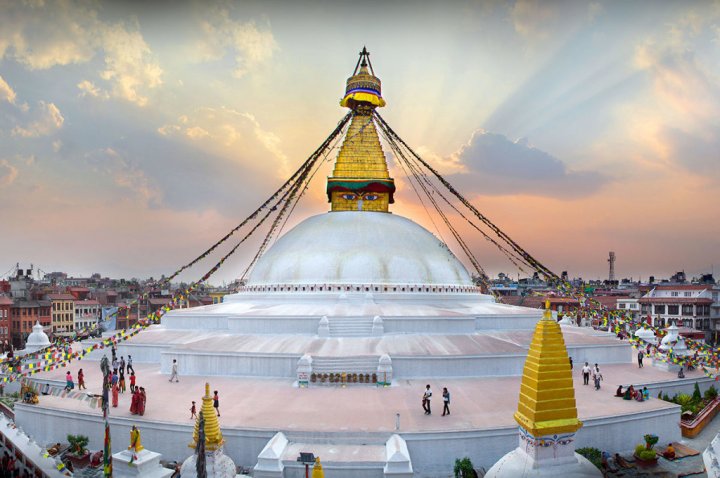
Kathmandu is the capital as well as the largest city in Nepal, and it is also famous as the cultural and art centre throughout history. Jaw-dropping in its beauty and history, this hilly area explodes with beautiful sights, sounds and smell. It is a global destination known for its pleasant mountain climate and unmatched natural beauty. The best time to visit Kathmandu is from March to October as you can enjoy the summer weather with nature and hop the place experiencing food, festivals and events.
- One of the world heritage site: In 1979, Kathmandu was given the status of World Heritage Site by UNESCO. It consisted of 130 significant monuments and pilgrimage sites. Kathmandu valley is a culturally rich heritage site.
- Lake turned city: In the ancient era, Kathmandu Valley was a huge lake surrounded by the beautiful mountain range. The geologists have scientifically proven the fact that the lake was filled with lotuses floating all over.
- The streets of Kathmandu: Streets of Kathmandu are equally interesting for all kind of tourists. As it is a tourism hub of Nepal, shopping is one thing that you can never miss. It is a place for authentic Nepalese goods, like handicrafts, thangka painting, and fabrics like cashmere, pashmina, silk, wool and handmade garments. Among the food-loving people, local spices are very much popular. Exotic Nepalese weapons, traditional musical instruments and hemp products are among the few interesting things which the tourists love.
- Named after a temple or shrine: Kathmandu is known as the ‘City of Temples’, and it’s a bowl-shaped valley of central Nepal, which is historically named as ‘Nepal Mandala’. According to the local tradition, the ‘Kaasthamandap’ (wooden shelter) which was built in the 12th century from a single Sal tree. It is located in the south-west of the Durbar Square, which is a pagoda-shaped structure with four entrances, one in each direction. In four corners there are idols of Lord Ganesha inside the shelter, and at the centre, there is a small shrine of Gorakhnath. It is said that the name Kathmandu was derived from this word ‘Kaasthamandap’ of the shrine.
- People of Kathmandu: Kathmandu is a very cosmopolitan city as people from various ethnicities reside together. The people are very hospitable and friendly in nature. The major ethnic group which exist there are the Newar and the others are the Gurung, the Magras, the Sunuwar, the Tamang, the Chetris and the Khas Brahmins. People from various places and countries from different backgrounds have come together to present a melting pot and made Kathmandu a unique place to live and visit.
- Never ruled by any foreign country: Historically, while some other country people once ruled the neighbouring countries like India or China, no foreigner has ever been able to rule or conquer Kathmandu.
- Centre of fusion: Kathmandu is a fusion of artistic and architectural traditions which is amalgamated from other cultures with local art and architecture. Art in Kathmandu is vibrant, which demonstrate the modernism as well as traditionalism, which is influenced by various nations. Asian and global influences.
10 Best Places to Visit
1. Durbar Square
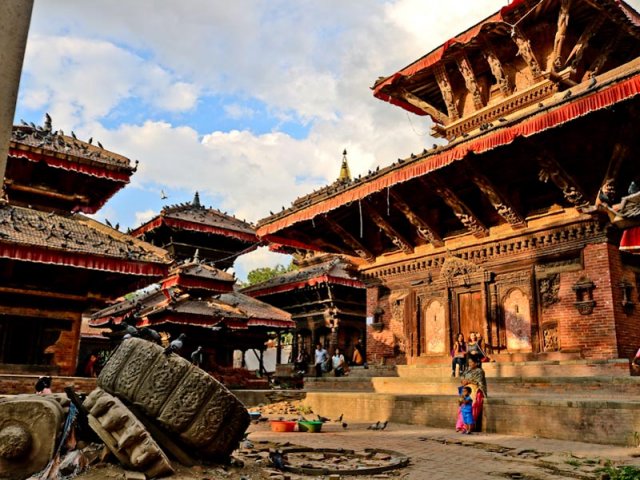
Durbar square of Kathmandu can be called as the landmark of the historical attraction of the city, and it is the immediate large square surrounded by ancient Newari architecture, royal palaces, high temples and famous shrines. It is located in the area opposite the old mansions in Kathmandu. There are three Durbar Squares in Kathmandu – Kathmandu Durbar Square, Bhaktapur Durbar Square, and Patan Durbar Square. Kathmandu Durbar Square is an active living place filled with people worshipping in shrines, selling various goods or simply strolling around. UNESCO is restoring the south of the Durbar Squares after the severe damaged in the earthquake of 2015, but the northern section remains intact till now. It is an active public walkway which links many streets. The locals can pass through and leave as needed, yet the tourists are charged for their entrance.
2. Swayambhunath

When you are in Kathmandu, you are definitely on an urge to find peace and prayer. In the north-west of Kathmandu valley, the little hillock of Swayambhunath which is also popularly known as ‘Monkey Temple’ is a beautiful place which gives a panoramic view of most of the city. The glory of Kathmandu is said to have begun from this point of the journey. ‘Swayambhu’ which means King Manadev around 460 AD, built self-existent one, and it became an important centre of Buddhism by the 13th century. The shrine is perhaps the best place to observe the religious harmony of Nepal. Be prepared your way up to 365 steps to meet some furry friends in this place.
Swayambhunath temple consists of shrines, temples and magnificent domed stupas. Each temple is richly decorated with gold and colourful flags. The sight of the summit is worth the trek of climbing to the temple. The large gold plate ‘thunderbolt’ or Vajra is set on the east side of the Stupa, and the Buddha statue is situated on the west-side. If you want to visit the lace with children or disabled person, a bit of planning can be remarkably hassle-free. Travelling with any age of children or any level of a disabled person is not advisable to certain areas. The temple is easily accessible by foot, bike or cab from Kathmandu. This UNESCO World Heritage Site has the admission fee of Rs.200.
3. Pashupatinath
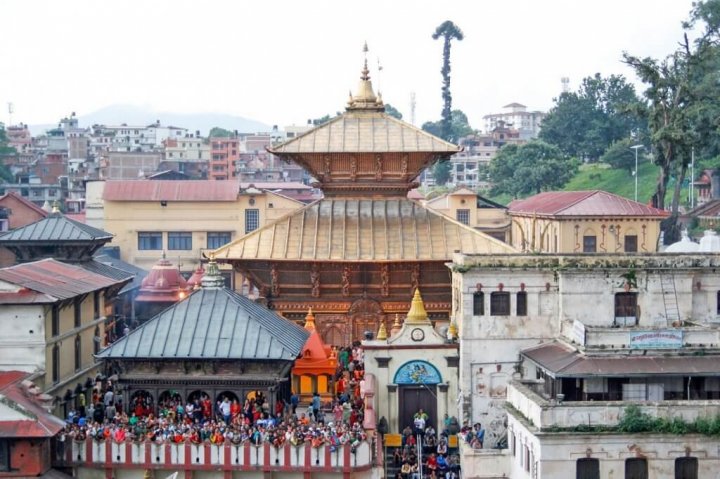
Pashupatinath Temple is the oldest Hindu temple complex in Nepal which is dedicated to the Lord Shiva Pashupatinath. This complex area is a part of UNESCO World Heritage Site, and it includes 518 temples, buildings and structures. The main temple is located within the courtyard and features of the main pagoda which provides for carved wooden rafters, two-level roofs covered with gold sheets and cubic structures. There are four main doors of the pagoda which are covered with silver leaves with golden pinnacle. You can explore 492 temples, 15 Shivalayas (shrines of Lord Shiva) and 12 Jyotirlinga (phallic shrines). It is also a cremation site for Hindus. The temple is open from 5 am to 12 noon for viewing, sightseeing and morning worship and then from 5 pm to 7 pm for the strolling and worshipping. Apart from the daily rituals and devotion, you can also observe special rituals during essential dates of the lunar calendar.
4. Thamel
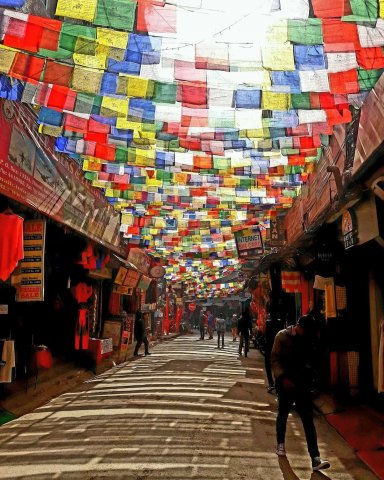
If you are planning to visit Kathmandu, you would love to get souvenirs for your loved ones, as well as shop for yourself too. There is no better place than the most popular tourist spot where you will get a huge number of street vendors with souvenirs and flutes. When the tourist from abroad think what they should see in Kathmandu, Thamel central is the ultimate place to chill out in the city. It is convenient to walk around, and there are plenty of stores selling trekking gears and souvenirs, you can exchange currency easily here, you will also get foods, bars and bakeries all European style. Nowadays, due to the heavy crowd, it is becoming somehow unappealing to many tourists, but it still manages to retain the old flavour and feel, with the hanging Tibetan prayer flags and cycle rickshaws.
5. Bhaktapur

Staying at Kathmandu has its charm, but if you are planning to have a few days more in hand to take some different flavour of the place, then 20 km east of Kathmandu has the beautiful Bhaktapur which can be reached from Thamel in 40 minutes by car. Bhaktapur is a historical living place which probably will remind you of the medieval cities of Europe. Narrow streets and brick buildings which several Hindu and Buddhist shrines can be found easily. In the past, as the capital of Malla Kingdom, it is a wealthy state judging by the architectural richness and variety of many temples, buildings and pagodas. The people of Bhaktapur are mostly Hindus and Newars, and the Newar culture is famous for its architectural uniqueness, which includes multiple-roofed pagoda and Newar windows. It is a carefully planned city with temples, many squares, sunken wells, courtyard and old streets. As one of the most ancient places in Nepal, with palpable spirituality and world’s kindest people around, Bhaktapur will make your stay a memorable one.
6. Boudhanath Stupa
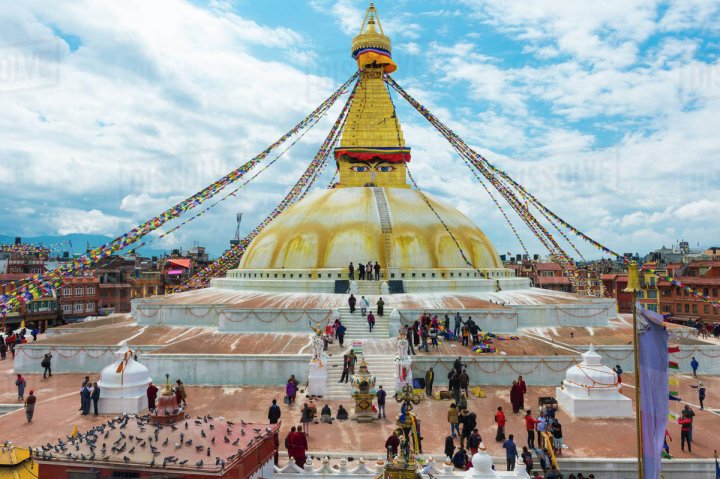
Boudhanath Stupa is also known as Boudha with its original name as Kashti Chaitya is an area about 7 kilometres from the closest airport destination, Kathmandu city centre. It is one of the largest 5th century Boudha Stupa in the world and a home for most important stupas outside of Tibet. Many Buddhists take a pilgrimage to Boudhanath, where the monks ritually walk around the Stupa. The surrounding of the Stupa has Tamang Gompa, which has a pleasant courtyard with numerous traditional shops selling thankas, prayer wheels, singing bowls and many more. Boudhanath Stupa is one of the most liked sightseeing places in Kathmandu, and it has private sightseeing day tours, which can be helpful for foreign visitors.
7. Garden of Dreams
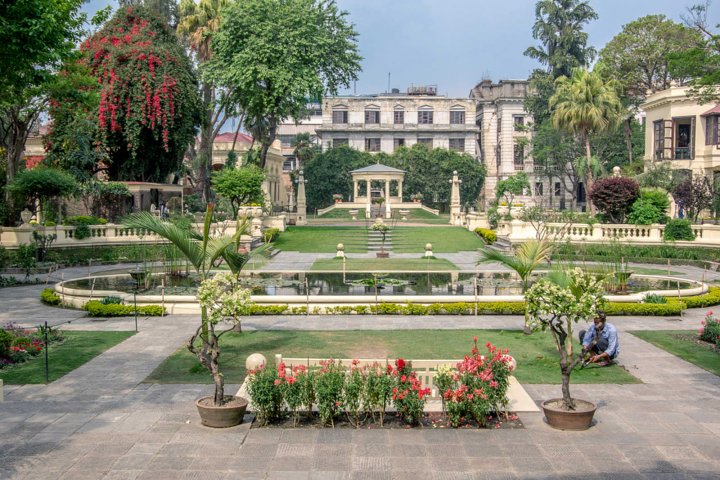
Garden of Dreams is also called ‘Swapna Bagicha’ is one of the most beautiful and serene enclaves of Kathmandu. It was originally named as ‘The Garden of Six Seasons’ after Nepal’s six seasons and was formerly a private garden. If you are at Kathmandu, you are surely looking for an escape from the hustle and bustle of the city and a relaxing time maybe after a week of sightseeing or trekking. The Garden of Dreams is a perfect place for that. It is located in between the Thamel Marg, and Kantipath on Tridevi Sadak. There are dozens of gorgeous details in the garden like the original gate, fountains and ponds, the ‘hidden garden’ in the south, and so on. This neoclassical historic garden is a great place to get your souvenir, get a map and roam around.
8. Langtang Regions
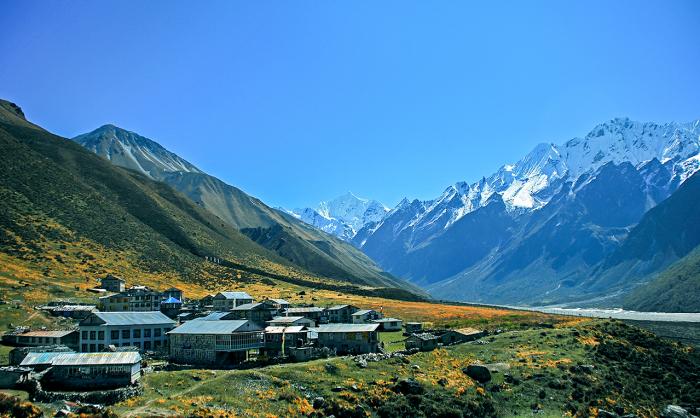
Like the Everest and Annapurna trails, the Langtang region is a well-popular destination with a wide range of stunning scenery and trekking experiences. It is the home for several mountains and a loved place for tourists regarding trekking and mountain climbing. It is located in the northern side of Kathmandu, and it borders with Tibet, and it also has the Langtang River flowing as a major tributary of the Trishuli Ganga. The dominant inhabitants of the Langtang are the Tamang ethnicity, and their lifestyle reflects rich Himalayan heritage. The Langtang National Park is located in the same Himalayan belt as the Langtang Valley. It is best to visit Langtang for trekking during Spring and Autumn season for a crystal clear mountain view without any clouds and fogs.
9. Patan
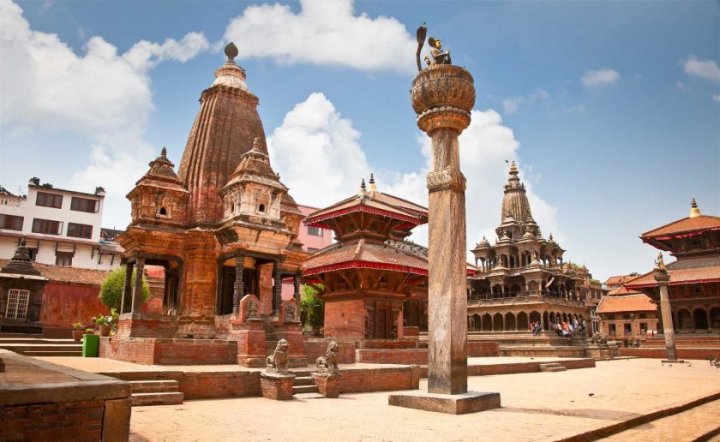
Among the largest heritage cities of Kathmandu Patan lie in the south of Kathmandu city within the Kathmandu Valley. Patan is famous for its adjacent Durbar Square, the Patan Kumari and the stone and metal workings. It is a popular day trip option for the tourists as there is an easy way to reach Patan by a short bus ride or taxi ride in just 30 minutes. Besides, the Patan Museum is a must-see place if you visit there and it is a traditional centre for handicrafts, jewellery, masks and Buddha statues.
10. Bandipur
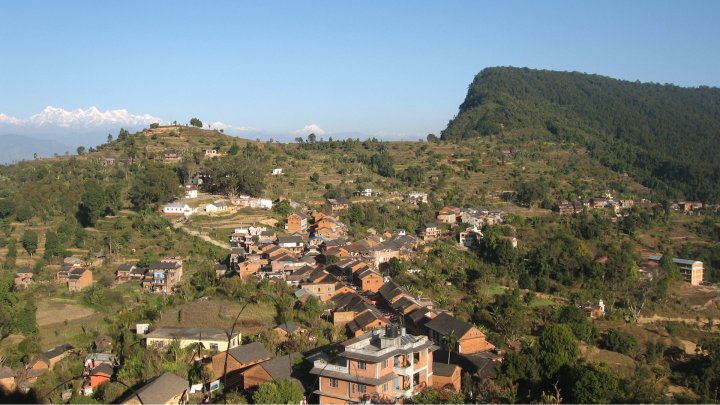
Bandipur is one of Nepal’s most charming towns as it can also be called as a living museum of the Newari culture. It took a lot of effort to preserve the magic and developing the town together. It gives a distinct European feel with its 18th-century architecture, cafes and lodges, pedestrian one and outdoor dining. For centuries it has been an important trade route between India and Tibet until the bypassed way of Prithvi Highway in 1960. In the mid-way of the trip between Kathmandu and Pokhara, the Newar town Bandipur can be found with its intact age-old flavour. You can do for the historical trail at Dumre Bazar to a town that has fully changed or climb through the pristine forest. The rich hill, gorgeous mountain views and hiking will make your day for sure.
What to Do Other than Visiting Places at Kathmandu
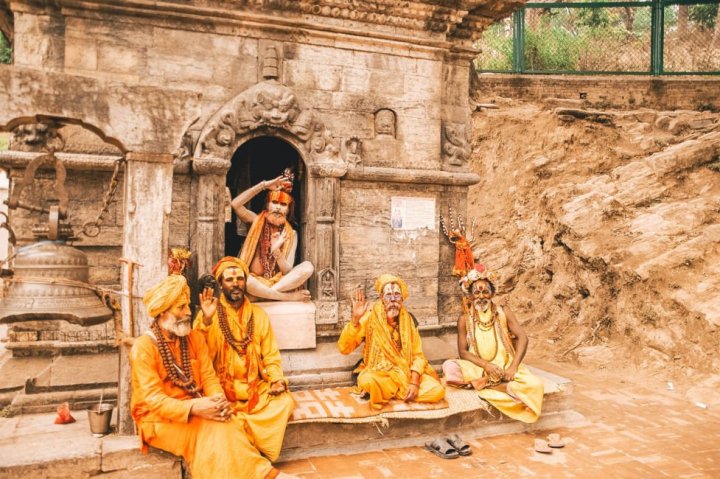
Try local food: Among much famous Nepali foods, you can try the gluten-free but heavy, vegetarian-friendly like dal-that, momos, Newari cuisine, Sel roti, samosas, panipuri and even the ‘Everest beer’ which is the local Nepali beer. You can also opt for some sweet and spicy foods like dim sum and dumplings, lakhamari and more.
- Mount Everest helicopter tour: Take a 3-hour helicopter trip for sightseeing which is available through online booking. Enjoy the panoramic view of the breathtaking beauty of Kathmandu.
- River rafting at Trishuli River: You can take a day trip and enjoy the river rafting at Trishuli River while experiencing the ‘whitewater rapids’.
- Take cooking classes: You can take some crash course on how to cook momos like Nepalese and let your friends and family members with your cooking skills.
Plan Your Trekking
When you think of Nepal, what comes to mind? Mt. Everest is probably at the top of your list, and it’s no surprise – it’s the tallest mountain in the world! The most popular times to go trekking in Nepal is February through May, and September through October, when the weather is clear and there are pleasant temperatures.
Do not trek alone. There have been numerous disappearances of solo trekkers in recent years. Always hire a guide or trek with other people. There are online forums where travellers can look for fellow-trekkers. This applies to everyone but especially women that are travelling single – they seem to more vulnerable. Always communicate your travel plans to your next of kin.


 Highlight the Best Facets of Your Incomparable Beauty: Discover the Best Face Highlighter Currently Available in India and Everything You Need to Know About Using Face Highlighters for Maximum Effect (2023)
Highlight the Best Facets of Your Incomparable Beauty: Discover the Best Face Highlighter Currently Available in India and Everything You Need to Know About Using Face Highlighters for Maximum Effect (2023)
 Forget the Blemishes and Get that Picture Perfect Flawless Radiance on Your Face: Check out the Best Foundations for Oily Skin Currently Available in India and Everything You Need to Know About Makeup Foundations (2023)
Forget the Blemishes and Get that Picture Perfect Flawless Radiance on Your Face: Check out the Best Foundations for Oily Skin Currently Available in India and Everything You Need to Know About Makeup Foundations (2023)
 Make Your Presence Felt Wherever You Go: Discover the Best Perfumes Under 2000 for Both Men and Women to Announce Your Arrival and Make Any Occasion Memorable (2023)
Make Your Presence Felt Wherever You Go: Discover the Best Perfumes Under 2000 for Both Men and Women to Announce Your Arrival and Make Any Occasion Memorable (2023)
 Protect Your Oily Skin from the Harmful Rays of the Sun: Discover the Best Gel Based Sunscreens for Oily Skin and Everything You Need to Know Before Buying One (2023)
Protect Your Oily Skin from the Harmful Rays of the Sun: Discover the Best Gel Based Sunscreens for Oily Skin and Everything You Need to Know Before Buying One (2023)
 Minor Blemishes and Wrinkles Affecting Your Confidence? Check out the Best BB Creams to Conceal Your Worries and Nourish Your Skin to Restore the Healthy, Radiant and Glowing Complexion Back Again (2023)
Minor Blemishes and Wrinkles Affecting Your Confidence? Check out the Best BB Creams to Conceal Your Worries and Nourish Your Skin to Restore the Healthy, Radiant and Glowing Complexion Back Again (2023)
